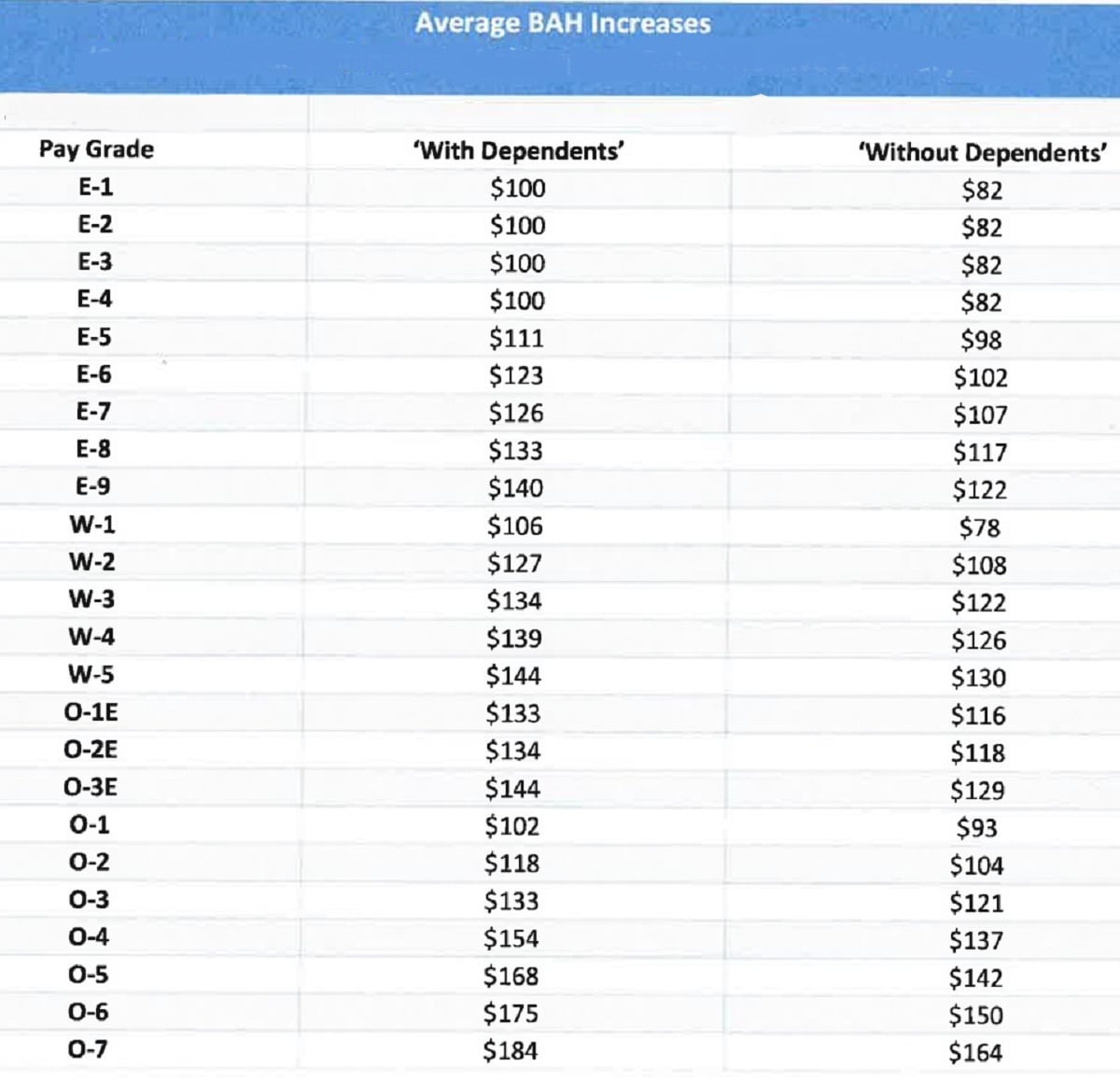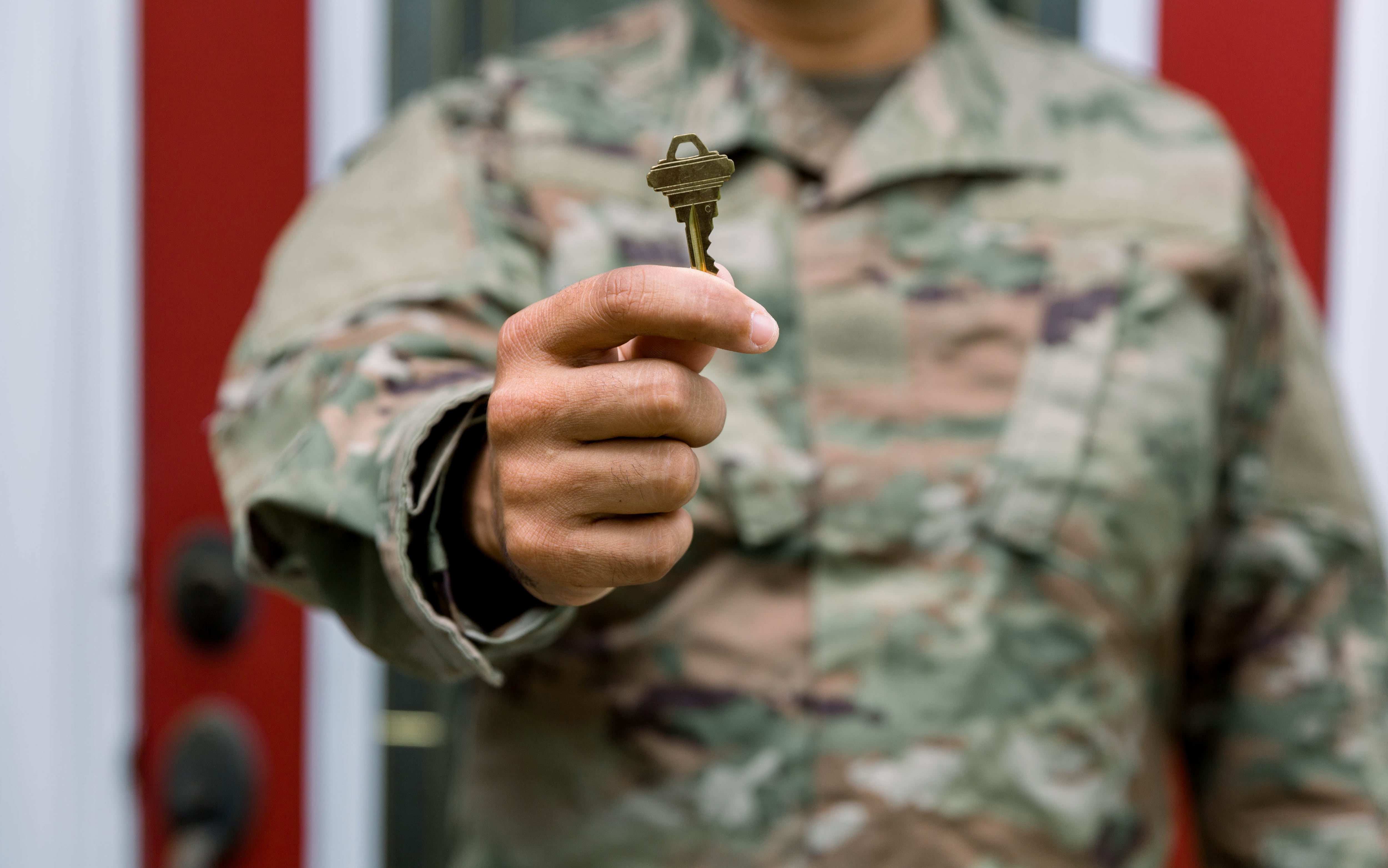Troops with families could get $100 to $184 more money each month, on average, if the Defense Department were to boost Basic Allowance for Housing levels from 95% to the full 100% of their housing costs — eliminating the cost share that troops now shoulder.
A recent DoD analysis, mandated by Congress, shows that if Pentagon leaders did decide to restore the full BAH level, as many lawmakers want, troops without dependents would get from $82 extra to $164 extra per month, on average.
In 2015, defense officials reduced the amount of housing allowances they pay to military families from the full cost to 95% of their rental costs, as determined by the Basic Allowance for Housing formula. The cost-saving measure was authorized by Congress, but it wasn’t required.
But due to economic conditions, concerns have grown about the affordability and availability of housing for military families. The rapidly rising cost of housing even persuaded defense officials to implement a temporary BAH increase at the beginning of fiscal years 2022 and 2023 to help service members find affordable, quality housing.
As a result, lawmakers have been urging defense officials to again have BAH cover 100% of troops’ housing costs, which DoD can do without legislation.
Congress also required DoD to analyze how much money the 5% boost would put in the pockets of average service members, based on rank and dependent status, as well as what it would cost the department. It won’t come cheap. Paying the full cost of housing would add up to $1.1 billion in DoD outlays in 2024 if the full BAH were restored in January. That’s in addition to the $26.8 billion in BAH currently paid to about 1 million service members.
DoD’s analysis, obtained by Military Times, shows, for example, that an E-5 with dependents would see an extra $111 a month, on average; an O-2 with dependents, would get an average of $118 more.
Department analysts also looked at the costs of gradually implementing a boost in the allowance, but their report doesn’t include recommendations about whether the department or Congress should act.
The current 5% out-of-pocket housing cost “reduces the buying power of service member families, especially in high cost areas of the United States,” lawmakers stated in their 2022 report requiring the DoD analysis.
Family advocates share their concern.
“Military families, like all Americans, have felt the financial pressure from the pandemic, inflation and a volatile housing market,” said Shannon Razsadin, president and executive director of the Military Family Advisory Network. “But military families don’t have the option to hunker down and ride it out. They move due to military orders, on average, every 2.5 years. From our extensive work on housing and food insecurity, we see a clear intersection between paying for housing and purchasing healthy food.
“At a time when nearly one-quarter of military families are experiencing food insecurity, an extra $100 per month could make all the difference,” she said. “We are encouraged by the options DoD presented and are hopeful Congress will lay the path for a full restoration of the housing allowance.”
RELATED

The DoD analysis also looked at what it would cost to restore the full BAH benefit over five years. The full implementation in 2024 would cost DoD an extra $1.1 billion in that year. Over the five years through 2028, it would add an estimated $7.5 billion (which includes inflation in housing costs).
If DoD increases the BAH gradually — by one percentage point each year for five years — service members would get less money at the start — ranging from $19 a month to $31 a month, on average. But it would cost DoD less: an extra $214 million in 2024 and an extra $4.4 billion over the five years.
The following chart from the report shows average BAH increases if DoD decides to restore the full BAH benefit.

While the monthly BAH increase would apply to all eligible for the allowance, troops living in privatized housing wouldn’t see it because their full BAH generally goes directly to their housing landlord. The rent for privatized housing is set at the BAH rate.
Generally, about two-thirds of service members live in the civilian community. Service members may choose to rent or buy a dwelling in the civilian community that costs less than the monthly BAH and can pocket the extra money. If they choose to rent or buy a dwelling that costs more than BAH, the extra expense comes out of pocket.
The allowance is designed to offset the costs of local median rents and average utilities. BAH rates are adjusted each January based on surveys and information collected about rent and utilities for different types of houses in more than 300 military housing areas in the United States, including Alaska and Hawaii.
In 2023, BAH rates rose an average 12.1%, the largest year-over-year percentage jump in the allowance in at least 15 years.
The Government Accountability Office has reported that DoD needs to improve the way it calculates troops’ housing allowances and defense officials are in the process of reviewing those procedures.
Karen has covered military families, quality of life and consumer issues for Military Times for more than 30 years, and is co-author of a chapter on media coverage of military families in the book "A Battle Plan for Supporting Military Families." She previously worked for newspapers in Guam, Norfolk, Jacksonville, Fla., and Athens, Ga.





